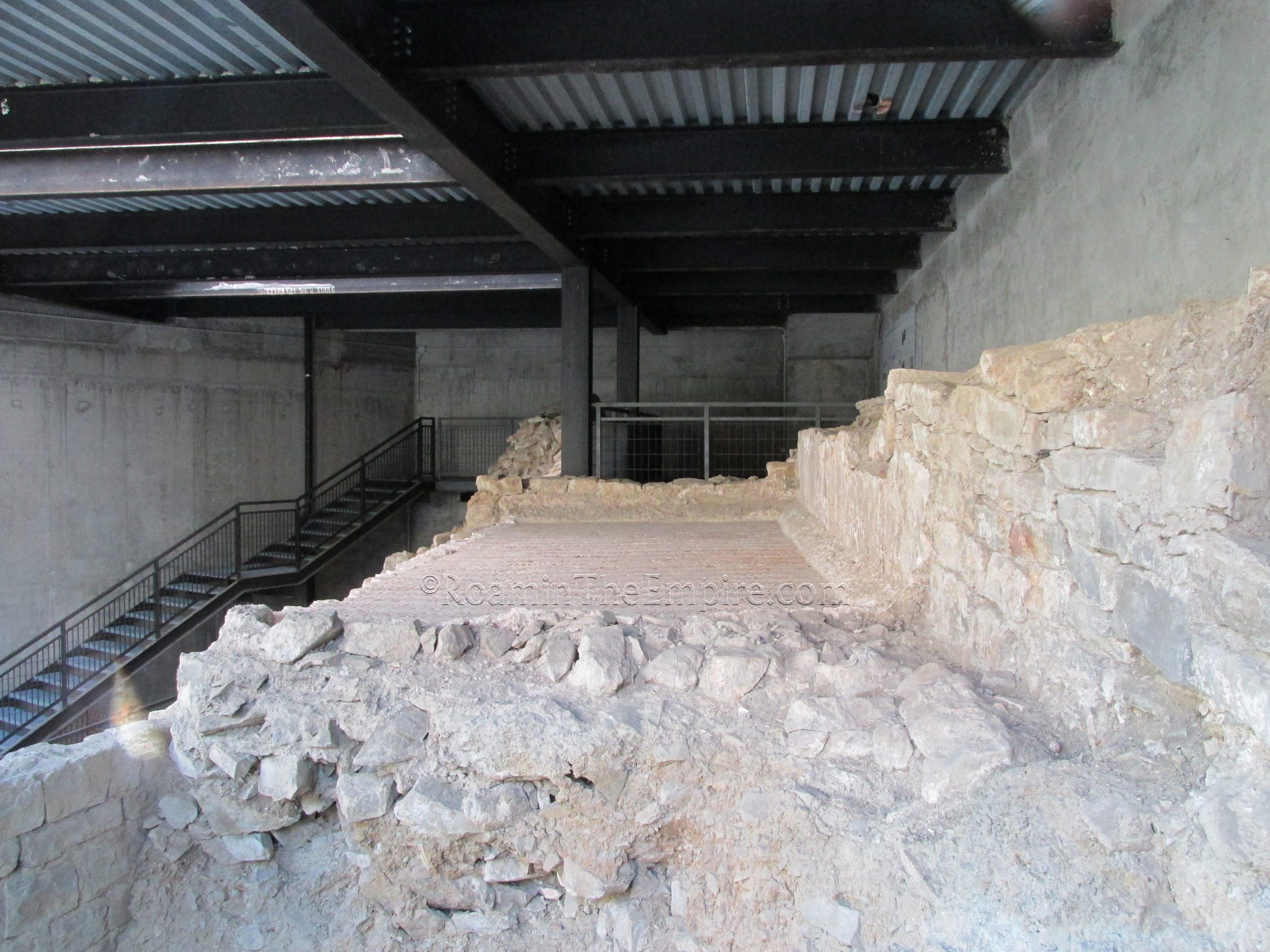
Continued From Tergeste Part I
One of the problems I ran into in Trieste is that there were a number of sites that had exceptionally restrictive hours; only open for an hour or two a week during certain times of the year and only available outside that time with prior phone reservation. And in my experience, even when they were supposed to be open, that wasn’t necessarily the case. One of these, the Antiquarium di Via Donota, is located directly behind the theater at Via Donota 18. This particular site is supposedly open on Thursdays from 10:00 to 12:00. A sign on the other antiquarium up the road noted that it was open on Thursdays from 10:00 to 11:00. The other method is by requesting access (+39 040 4261411 or sar-fvg@beniculturali.it) which I had no luck reaching anyone. I understand the very short windows is due to staffing logistics, but, given that it is open so infrequently, it would have been nice if it was actually open at these times. What is supposedly here are the remains of some 1st-2nd century CE residential structures that were later buried and used as a necropolis from the 4th to 6th century CE.
Just a few minutes’ walk from there, as Via Donota forks into two roads, one of them being the Via del Seminario which continues up the hill, is the Antiquarium Via del Seminario, located at Via del Seminario 2. This location is pretty much the same deal as the previous one, open for just a short window one day a week, this time supposedly Saturdays from 10:00 to 12:00 according to the website, but Thursdays from 11:00 to 12:00 according to a sign on the door. I tried for the Saturday window, but, it was not opened during this time. This sign also noted that the reservations were only for schools and tourist groups, which I probably would have been unsuccessful in arranging a reservation as a single interested party anyhow.
The one benefit to this site was that there were a few large windows through which some of the remains can be seen. What is present here was originally part of the late 1st century BCE defensive walls of Tergeste, which were later repurposed as terracing for residential structures. A nice section of opus spicatum flooring can be seen atop the walls through one of said windows.
Via del Seminario continues up the hill, turning into Via dell Monoache, which then intersects with Via del Castello, which leads to the top of the hill and the castle, as the name would suggest. To the west of the Castello di San Giusto is the Piazza della Cattedrale, which, in antiquity was the area of the Roman forum of Tergeste. The western part of the piazza is composed of the Monumento ai Caduti di Trieste, but the eastern part, closest to the castle is contains the remains of the civic basilica. What is presently standing is pretty heavily reconstructed, but, that’s probably to be expected, especially since it is an openly accessible public area; there’s no kind of restriction of access or supervision.
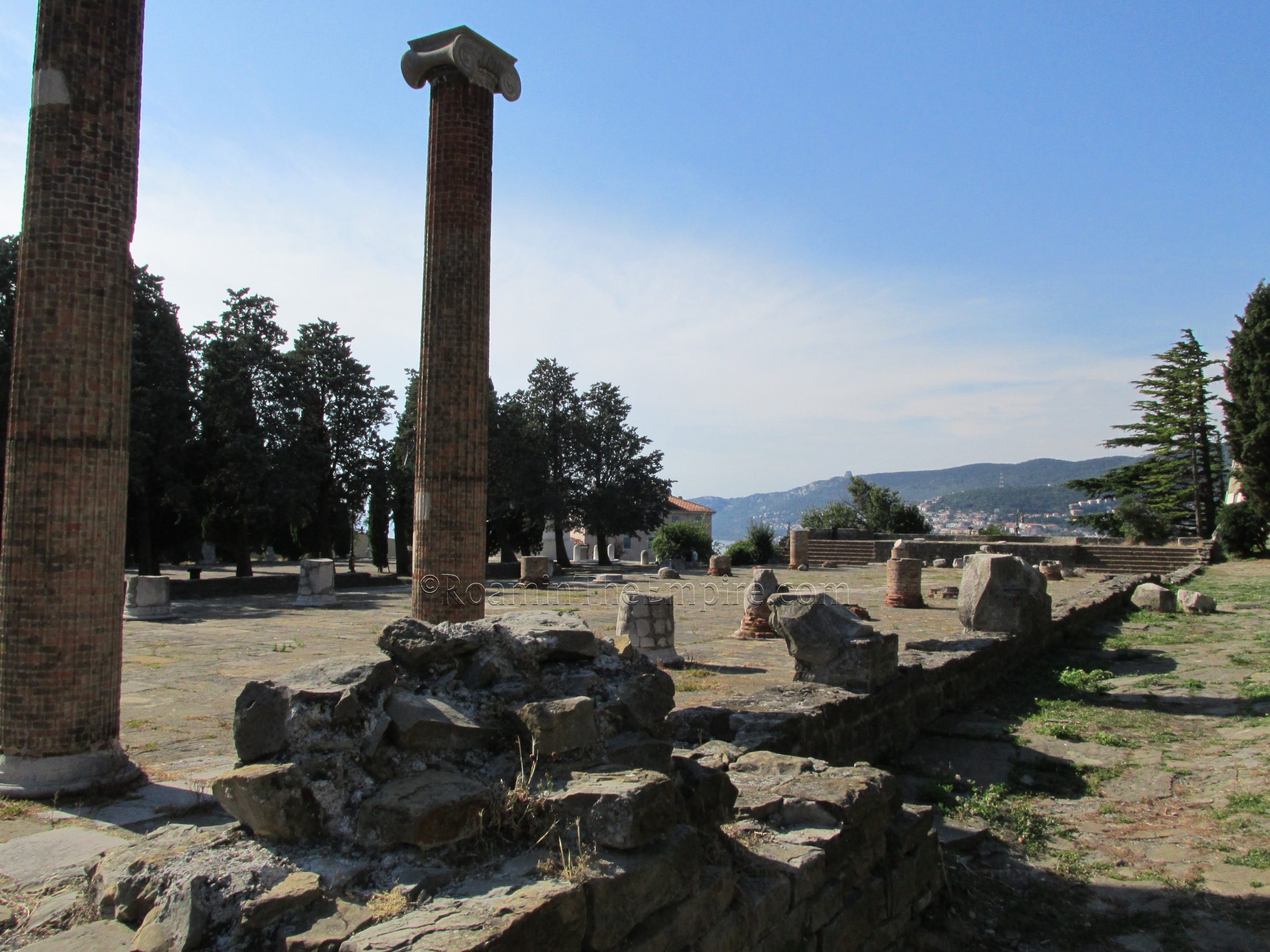
There are couple pretty substantial column remains/reconstructions, and then most of the other positions for the columns that made up the portico include either the bases or only the very bottoms of the actual columns. The first few courses of the wall that composed the portico is also present in most areas. A raised platform in which the rooms of the basilica were present is located at the north side of the columned portico. Within the portico (and also in the forum area to the west), there appear to be some older paving stones that are distinctly different than those that make up the majority of the paving in the piazza. I couldn’t find any definite information on whether these are original paving stones from the Roman period, but, I would hazard a guess that they may be. The basilica’s construction, along with the rest of the forum is dated to the 1st century CE.
Inside the adjacent Castello di San Giusto is the Tergeste Lapidarium. Access to the lapidarium requires ticketed entry to the castle as a whole, as the lapidarium is essentially just an exhibition in the Lalioi Bastion of the castle. The castle is open every day from 10:00 to 19:00. Admission is 6 Euros.
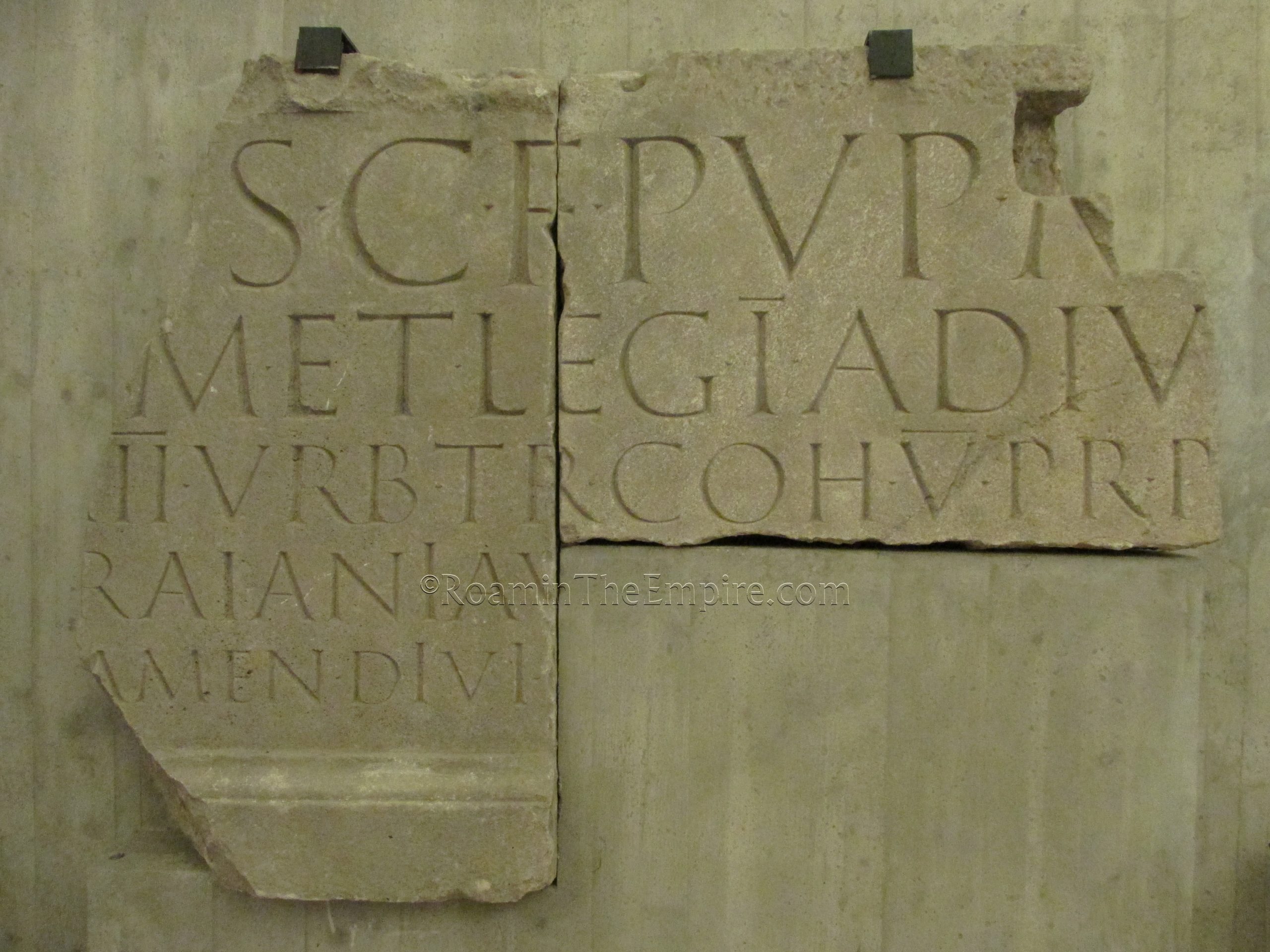
There are a number of other exhibitions of later period things more relevant to the medieval nature of the castle, but the lapidarium is located in the southern corner of the castle. As the name Tergeste Lapidarium would suggest, the collection here is primarily composed of locally found stone objects dating to the Roman period. The bulk of the artifacts are made up of inscriptions, many funerary in nature, but also including the two mentioned in the previous post noting the renovation of the theater and the possible presence of a sanctuary to Magna Mater near the Arco di Ricardo. There’s a few honorific inscriptions and dedications as well.
One area of the lapidarium is dedicated to mosaics, mostly geometric and originating from a nearby villa. There are also a few mostly complete statues, including a nice pair of Aesclepius and Hygeia, found during the excavations of the theater. There are additionally a couple of fragmentary statues as well. Most objects have a decent amount of information posted, but, it is solely in Italian. A few larger informational signs are also present, but are again only in Italian. It’s not an exceptionally large collection, less than an hour to get through the entire thing. There were areas that appeared to be closed off, but, I have no idea if there were actual artifacts in those areas or if they were just closed to keep people from wandering aimlessly through the hallways of the fortress.
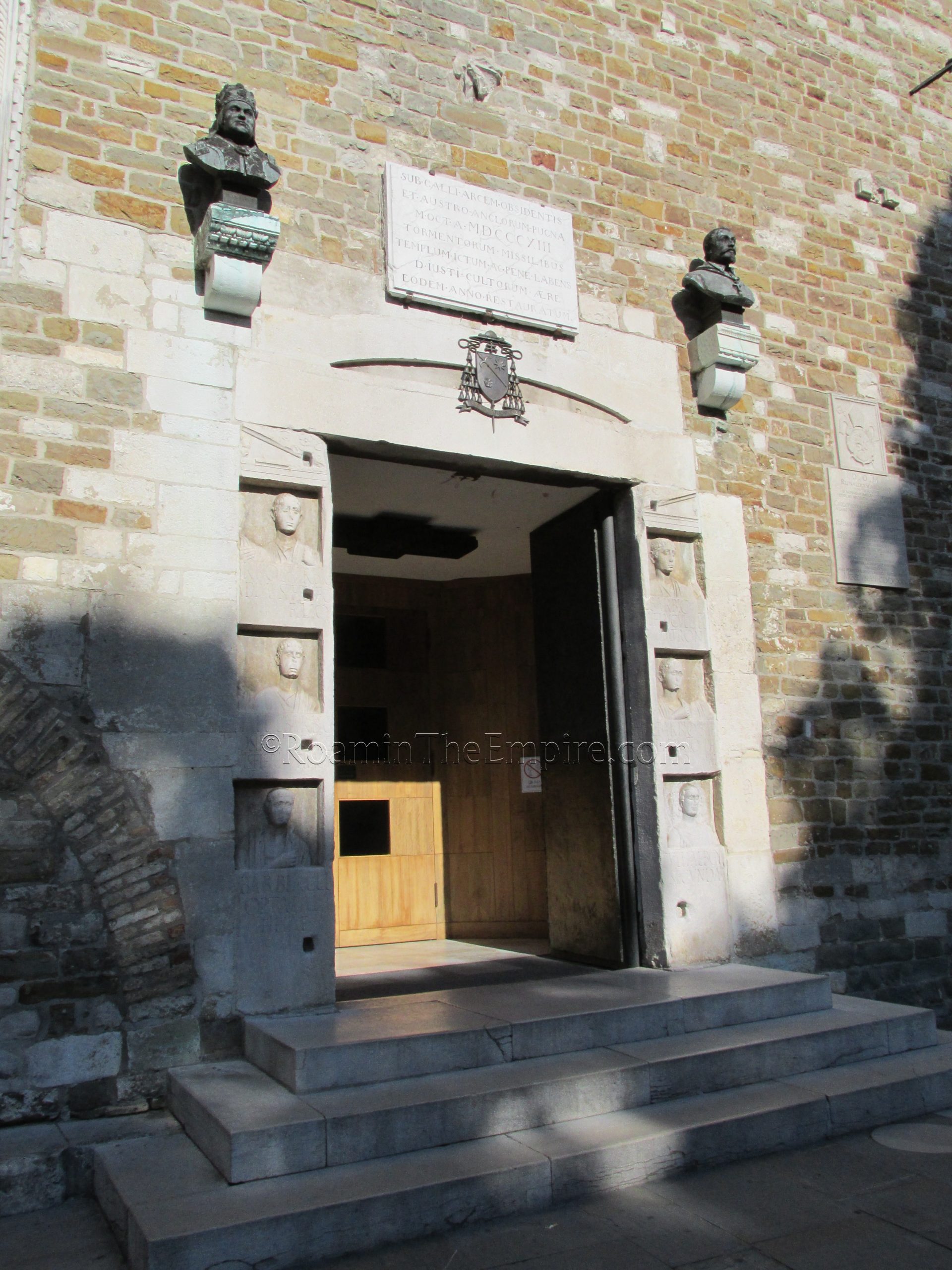
On the south side of the Piazza della Cattedrale is the Cattedrale di San Giusto Martire. The location of the church seems to coincide with what would have been the location of the Capitolium during the Roman period. The first notable thing about the cathedral is that the main entry way is flanked by two halves of a spoliated Roman funerary stele with portraits of the deceased. The halves are reversed, with the left half of the stele making up the right side of the entryway and vice versa. These are visible at any time, even if the church is closed. Though there aren’t any ancient remains inside the main church, there are some 13th century mosaics that are worth seeing. The church itself is open Monday through Saturday in the summer from 7:30 to 18:30 and the rest of the year from 7:30 to 19:00. On Sundays year round it is open from 8:00 to 20:00. There is no admission charge.
The bell tower of the church was constructed upon the remains of the propylaeum entryway into the forum of Tergeste. Decorative elements of the propylaeum are visible incorporated into the exterior walls of the bell tower, including a number of arms and armor motifs as well as a column incorporated into the south wall. There is a separate entrance into the bell tower where there is also a gift shop. Though a few of the column elements of the gate can be seen through windows if the shop and bell tower are closed, even better views can be had when it is open. The bell tower is open every day April through September from 9:00 to 17:00. The rest of the year it is open from 9:00 to 12:00 and 14:30 to 17:00. While it’s free to just walk into the gift shop and see some of the elements of the gate among the shop, even more can be seen by purchasing admission to go up the bell tower for 2.50 Euro.
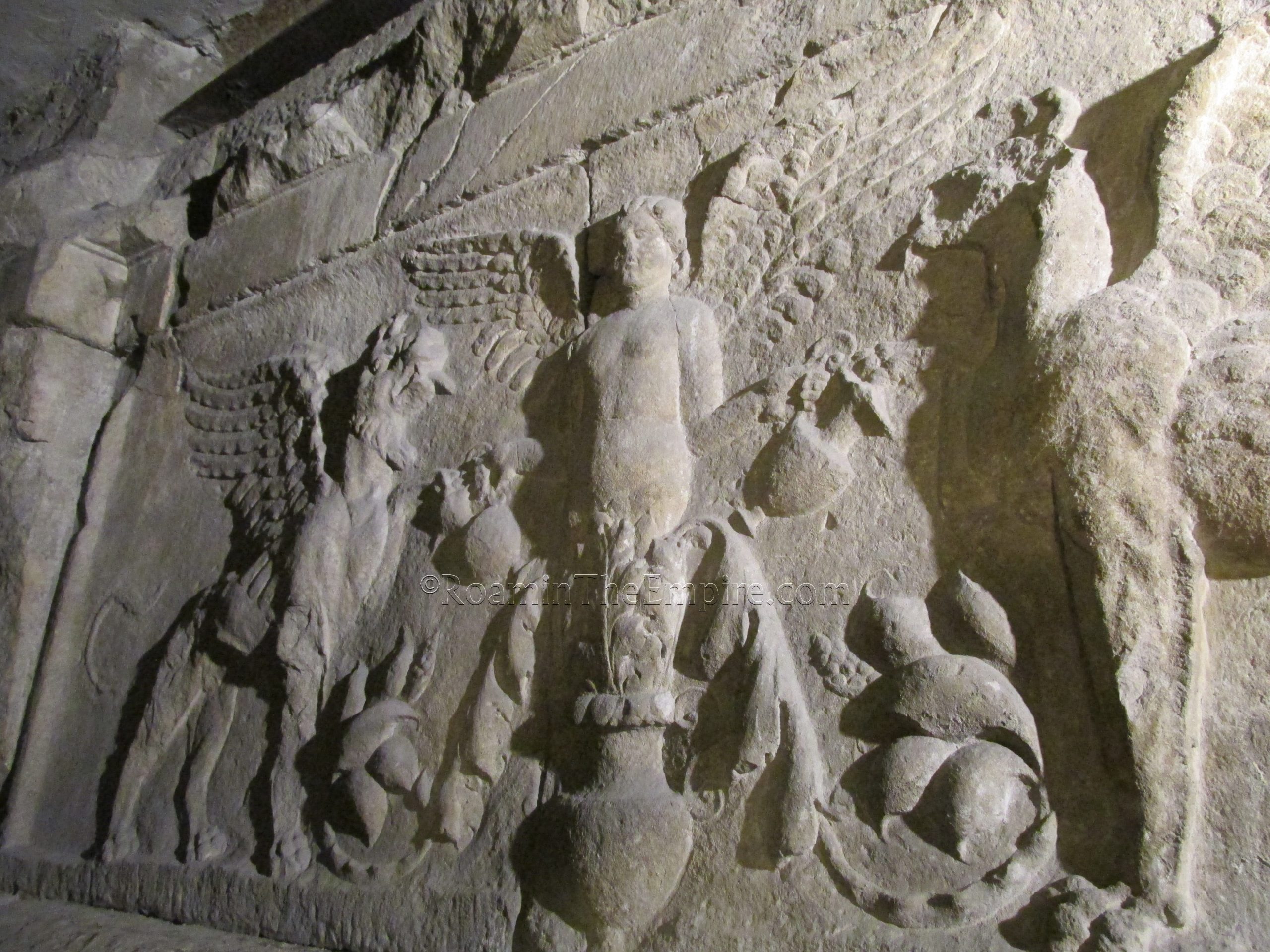
In addition to offering splendid view of the surroundings from the top of the tower, this also allows access to the base of the staircase which is constructed among further elements of the propylaeum. Visible here is perhaps one of the best preserved decorative elements of the propylaeum, a relief depicting a Cupid among two griffins.
The final stop on the Roman Tergeste itinerary is the Museo Orto Lapidario and the Museo d’Antichità ‘J.J. Winckelmann’ which are essentially combined into a single admission, though are identified as separate entities. The entrance to this museum complex is just south of the bell tower at Piazza della Cattedrale 1. The museums are open Tuesday through Sunday from 10:00 to 17:00 and closed on Mondays. Admission is free.
The Museo Orto Lapidario, the lapidary garden, is a bit wider scope than the Tergeste Lapidarium. While some of the objects (mostly inscriptions, but a few other stone elements) here are locally found, there are also sections dedicated to pieces from Aquileia and Istria. Geographically related objects are grouped together according to those three distinctions. While many of the pieces have informational cards and are displayed well, some of them are just kind of thrown together and in some cases, are just a number of fragments of inscriptions basically just permanently cemented into a wall. It’s somewhat understandable given the very fragmentary nature and wealth of some of this material, but is still a little disappointing.
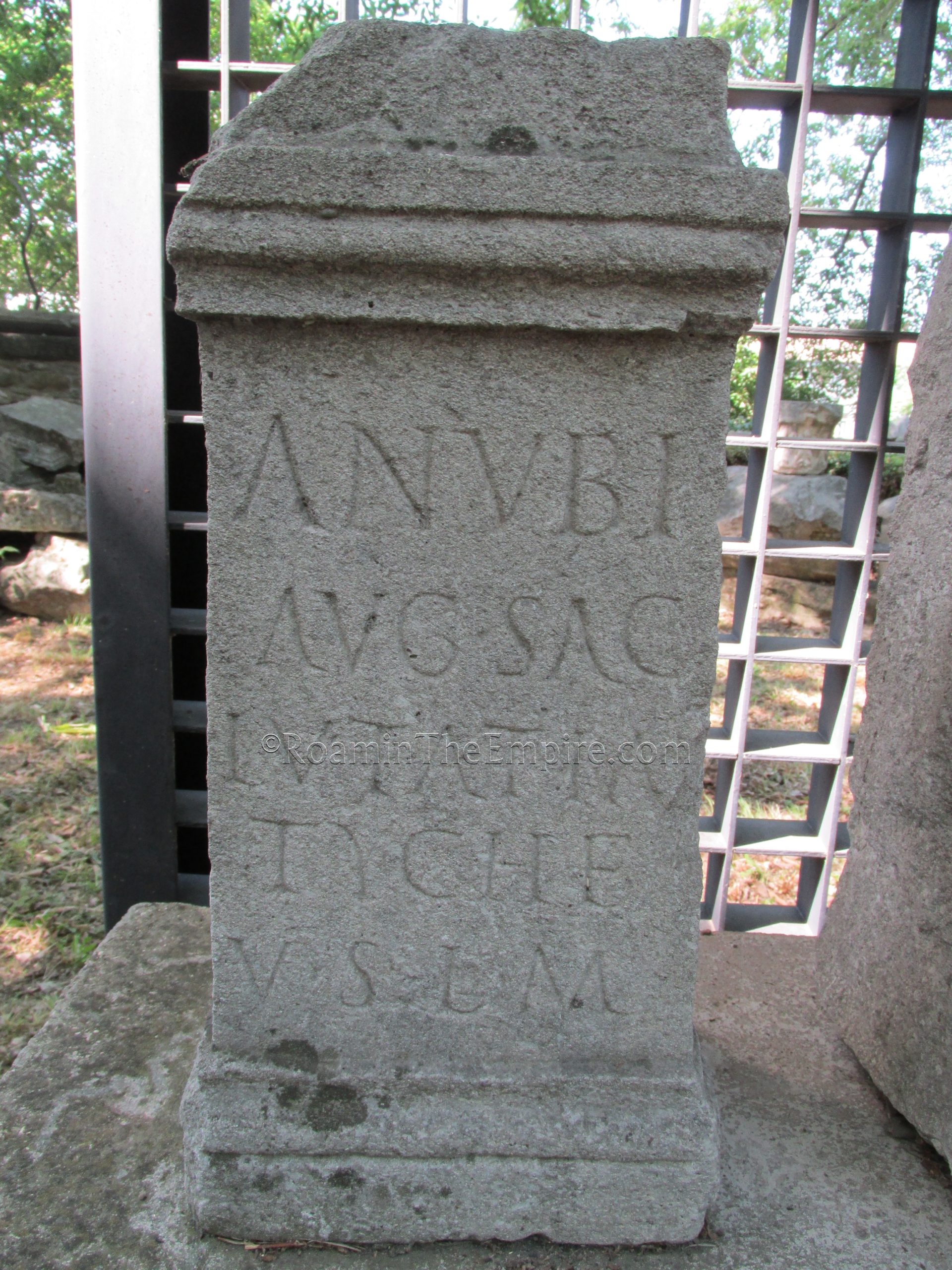
Some of the nicer pieces, including reliefs and some statuary fragments are displayed in a room off the gardens which contains the cenotaph of the museum’s namesake, JJ Winkleman. Overall, the Museo Orto Lapidario has some interesting pieces in the general collection, I particularly liked some of the votive altars and dedications, which included dedications to Isis Augustus and Belenus Augustus from Aquileia. There are quite a lot of pieces, though, and it took me about an hour to get through the lapidary garden.
From the Museo Orto Lapidario area, there is an entrance into the main museum. The collection in the Museo d’Antichità is quite vast and pretty much spans across the Mediterranean world. It’s not just locally found Roman objects from Tergeste, but rather includes artifacts from all over, including Egypt and the Near East. There’s a vast collection of Greek vases that are just packed into display cases. I actually found the museum to be a little overwhelming at times; a sort of archaeological overload. Lots of ceramics and small finds type objects. I found myself having to be a little selective in what I actually looked at in depth and photographed, just to avoid bogging myself down too much with certain things.
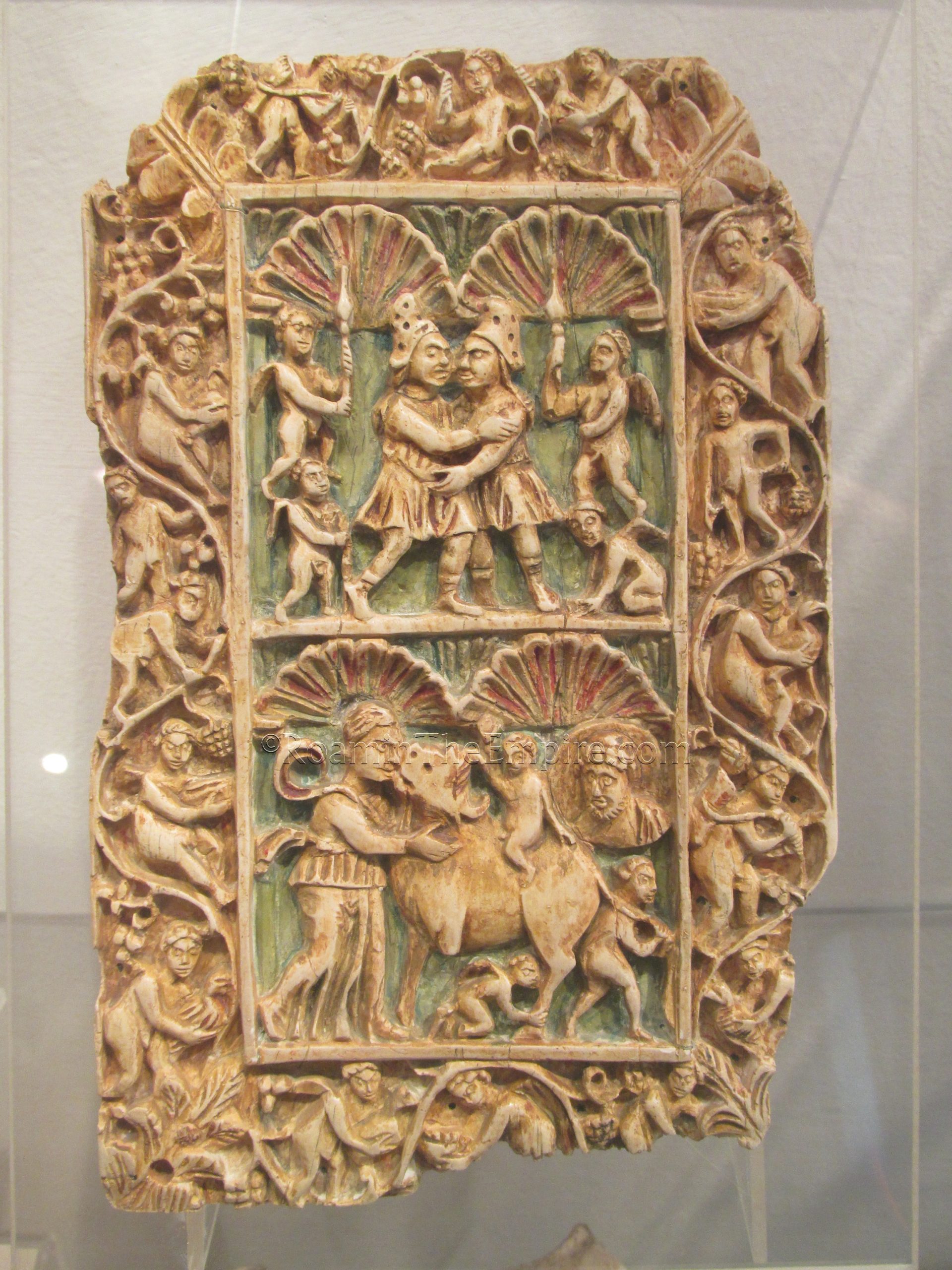
While the museum was not want for interesting objects, there were a few that stood out to me, particularly in the Roman collection. One that I thought was among the best was an early 6th century CE ivory relief that depicted the Dioscouri on one panel and the Europa on another panel. The subject matter and late dating made it particularly interesting. There’s also a pretty nice Roman portraiture collection that included some younger images of emperors and their offspring. There were a number of reliefs that included one depicting the conquest of the personification of Germania and another of two gladiators engaged in combat with their names inscribed above them.
All told, I spent about 2 hours in the Museo d’Antichità, which combined with the hour in the lapidary garden puts the total time at about 3 hours. I really probably could have spent more time there, and I think it would be fairly easy to do so. Especially for someone with a particular interest in ceramics. It’s quite a wealth of that particular artifact. Most objects have information cards, and a few of them even have English translations, but the vast majority are in Italian only. Given that the museums are free, it’s really difficult not to recommend at least a quick look through, even if you don’t have 3+ hours to devote to it.
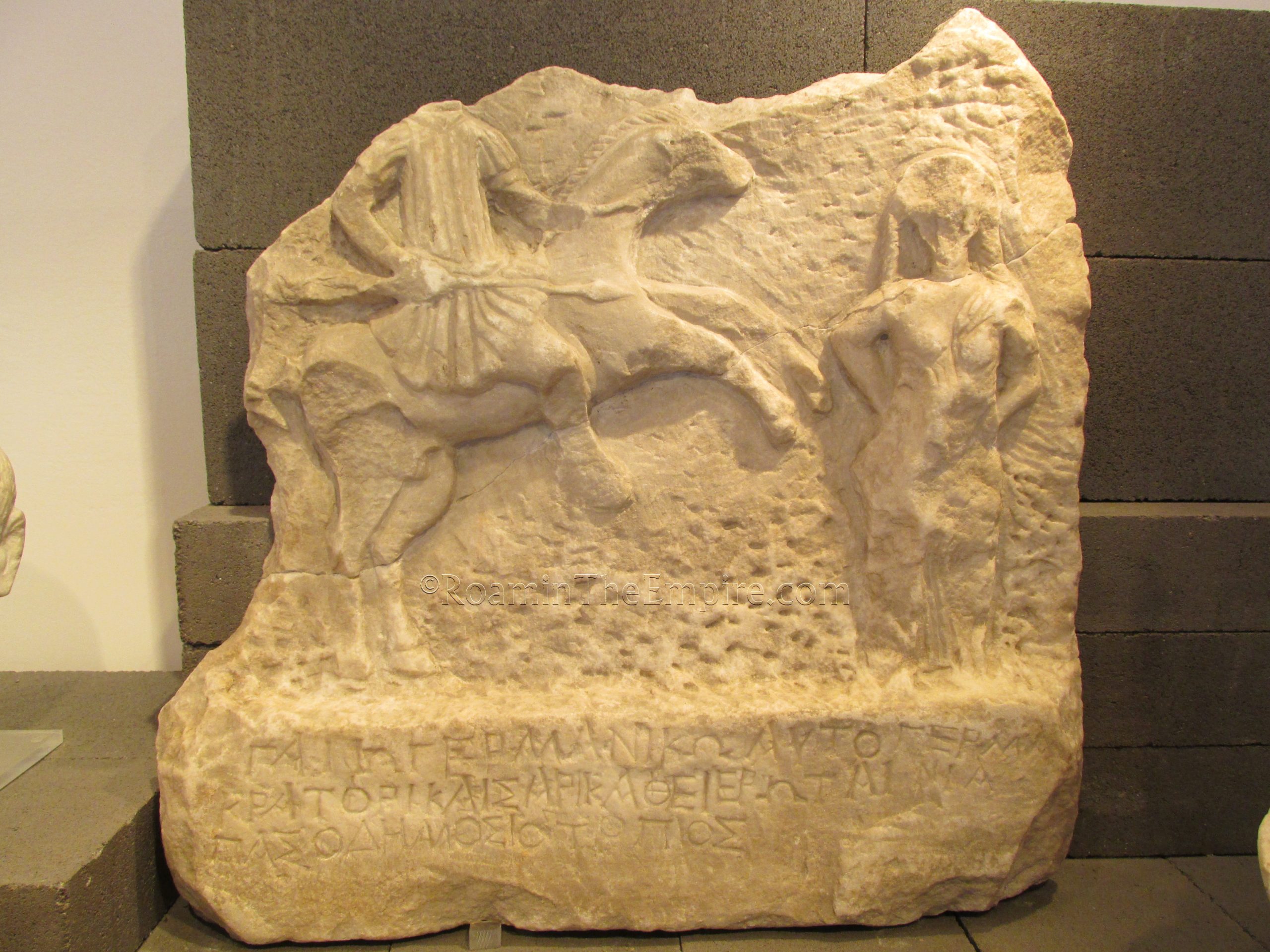
There’s one last site worth mentioning that falls into the category that the two sites mentioned at the beginning of the post does. Apparently some mosaics from a Paleochristian basilica can be seen at Via Madonna del Mare 11. This is supposedly open on Wednesdays from 10:00 to 12:00 or again by reservation at the email or phone number above.
Given the logistics of even getting to Trieste, seeing the remains of Tergeste is definitely not a day trip. I think that most things could be seen in a very full day, though, particularly since many of the sites have no admission and can be seen early in the morning or late in the afternoon when admission entry sites wouldn’t be open. It took me about a day and a half to really see everything, but, that also included backtracking a few times to try and make some admission times line up.
Sources:
Appian. Illyrike, III.4.18.
Caesar. Commentarii de Bello Gallico, 8.24.
Pliny the Elder. Historiae Naturalis, 3.22.
Pomponius Mela. Chorographia, 2.55.
Ptolemy. Geographia, 3.1.
Smith, William. Dictionary of Greek and Roman Geography. Walton & Murray, 1870.
Stillwell, Richard, William L. MacDonald, and Marian Holland. McAllister. The Princeton Encyclopedia of Classical Sites. Princeton, NJ: Princeton U Press, 1976.
Strabo. Geographika, 5.1.46, 7.5.18.


